The average size of a Friesian Horse is a topic of great interest for horse owners and breeders alike. The Friesian horse is known for its impressive stature, and its size can vary significantly from one individual to the next.
Generally speaking, the height of an adult Friesian ranges between 15 and 17 hands high (or roughly 5-6 feet at the withers). In terms of weight, a Friesian can weigh between 1,300 and 1,600 pounds. Despite its impressive size, the Friesian is a graceful and agile horse that is highly sought after for dressage and other sport horse competitions.
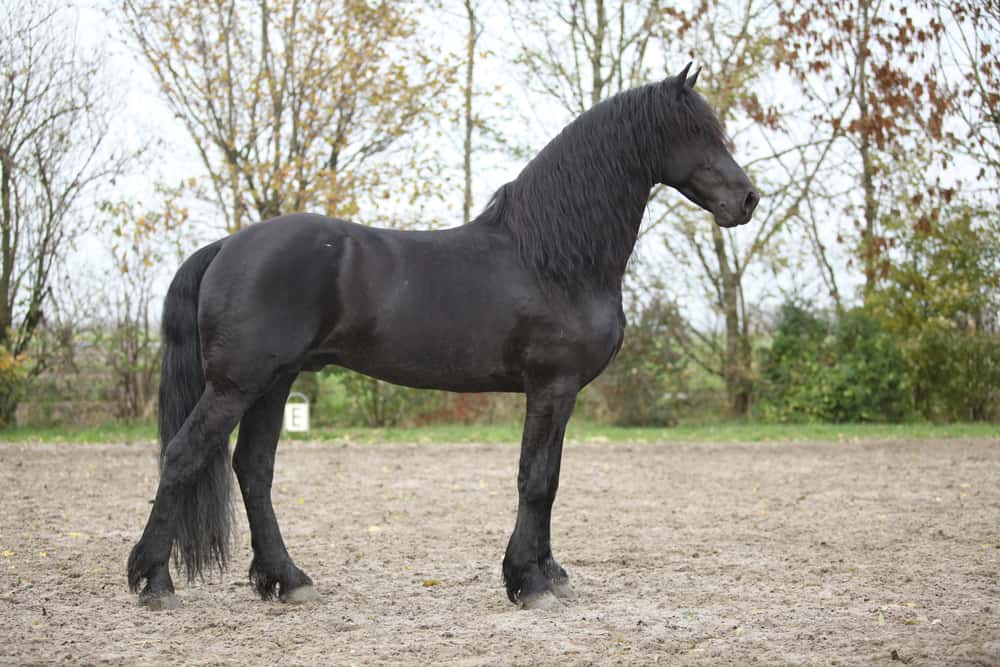
So, the Friesian is worth considering if you’re looking for a horse that will make a grand impression! With its impressive stature and beautiful appearance, it’s no wonder why this majestic breed is so popular.
Table of Contents
How can you tell how big a horse is going to be?
When determining how big a horse will be, there are a few things to consider. The most important factors are the horse breed and its height, weight, and conformation, as these can all influence the size of an adult horse. While some species can grow very large, others remain small even when fully grown.
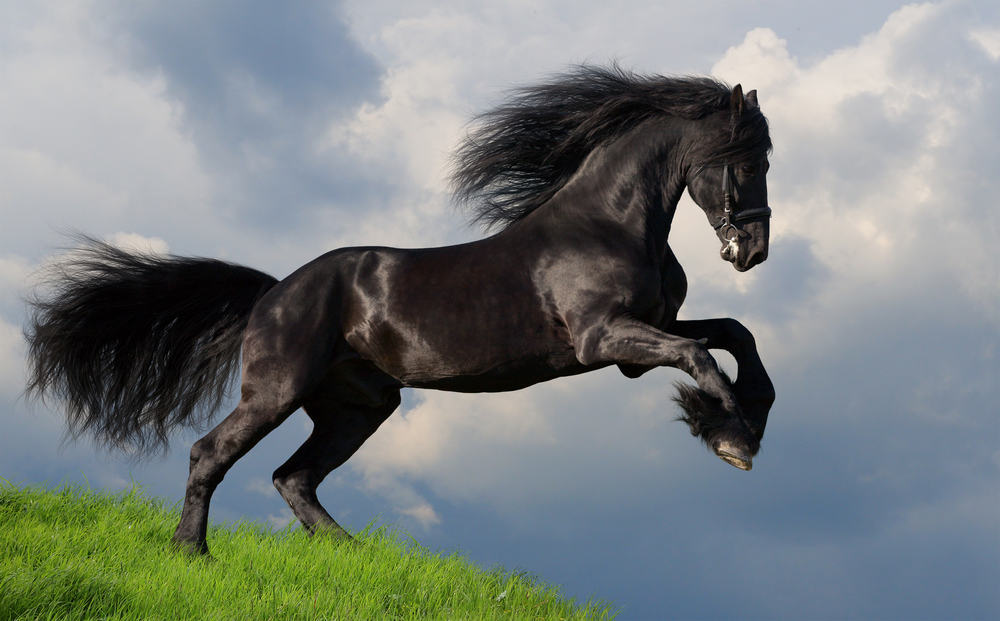
Horse height is measured in hands, with each hand being approximately 4 inches. Commonly used terms to describe a horse’s size include pony (under 14.2 hands), cob (14-15.2 hands), and hunter (15-16 hands). Knowing the breed of a horse can indicate its adult size, which can be compared to the current height of a horse.
Weight is also an essential factor when trying to estimate how big a horse will get. The weight of an adult horse varies greatly depending on breed and build but typically falls between 500 and 1,500 lbs. By comparing a horse’s current weight with its species’ typical weight, you can get a better idea of how big it will be as an adult.
Finally, the conformation of a horse’s body is also essential when estimating size. Conformation refers to the shape and structure of a horse’s body and affects its overall look. By looking at its current conformation and comparing it to the typical conformation of its breed, you can get a better idea of how big a horse will be as an adult.
Importance of Knowing the size of your Friesian Horse
Knowing the size of your Friesian horse is essential for any potential owner. It will help you determine the horse’s breeding potential and give you an idea of which type of Friesian is best for you and your lifestyle.
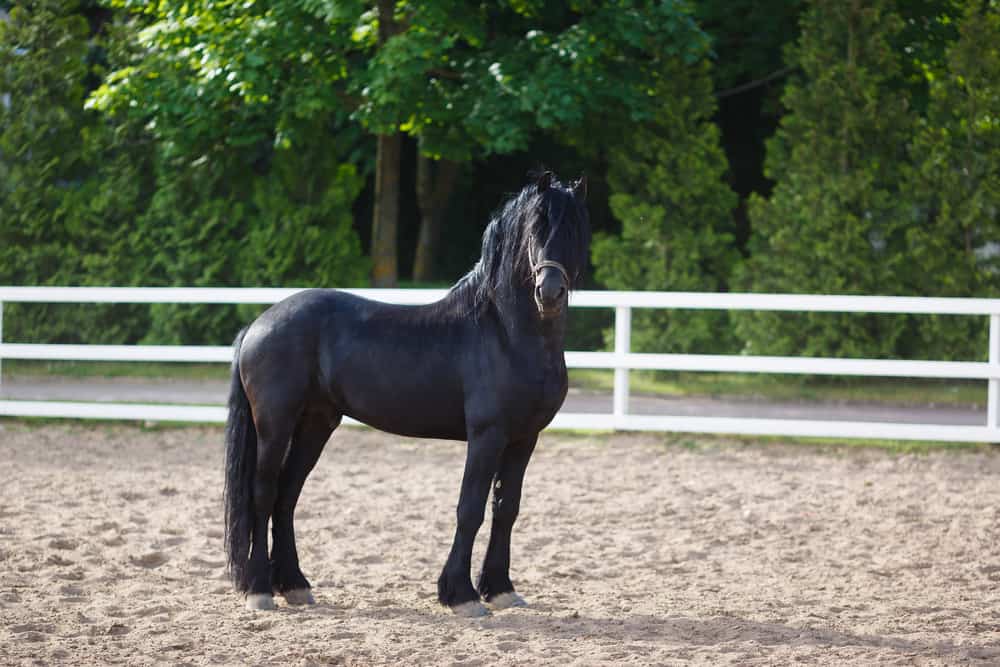
The Friesian is considered one of the giant draft breeds, with males typically reaching heights of 16-17 hands and females standing between 15.2-16.3 hands.
Knowing your horse’s size can help you determine the type of riding activities he’ll be able to do (such as dressage, jumping, or trail riding). It will also give you an idea of how much you’ll need to invest in equipment to care for your horse adequately.
In addition, knowing the size of your Friesian can help you determine its breeding potential. The larger a horse is, the more likely it is to become a successful breeding animal. This means that if you’re looking to breed your Friesian, it’s essential to make sure you have an animal with the size and conformation required for successful breeding.
Finally, by knowing the size of your Friesian horse, you can also decide which type of horse will be best suited for your lifestyle. The Friesian is a versatile breed with several different types, each with its strengths and weaknesses. Knowing the size of your Friesian will help you determine which type is best for you and your goals.
At what age does a horse reach full size?
A horse’s size is an essential factor to consider when choosing a particular breed, as some horses mature faster than others and can reach full size at an earlier age. Generally, most horses will contact their full size at age 5, but this can vary depending on the breed.
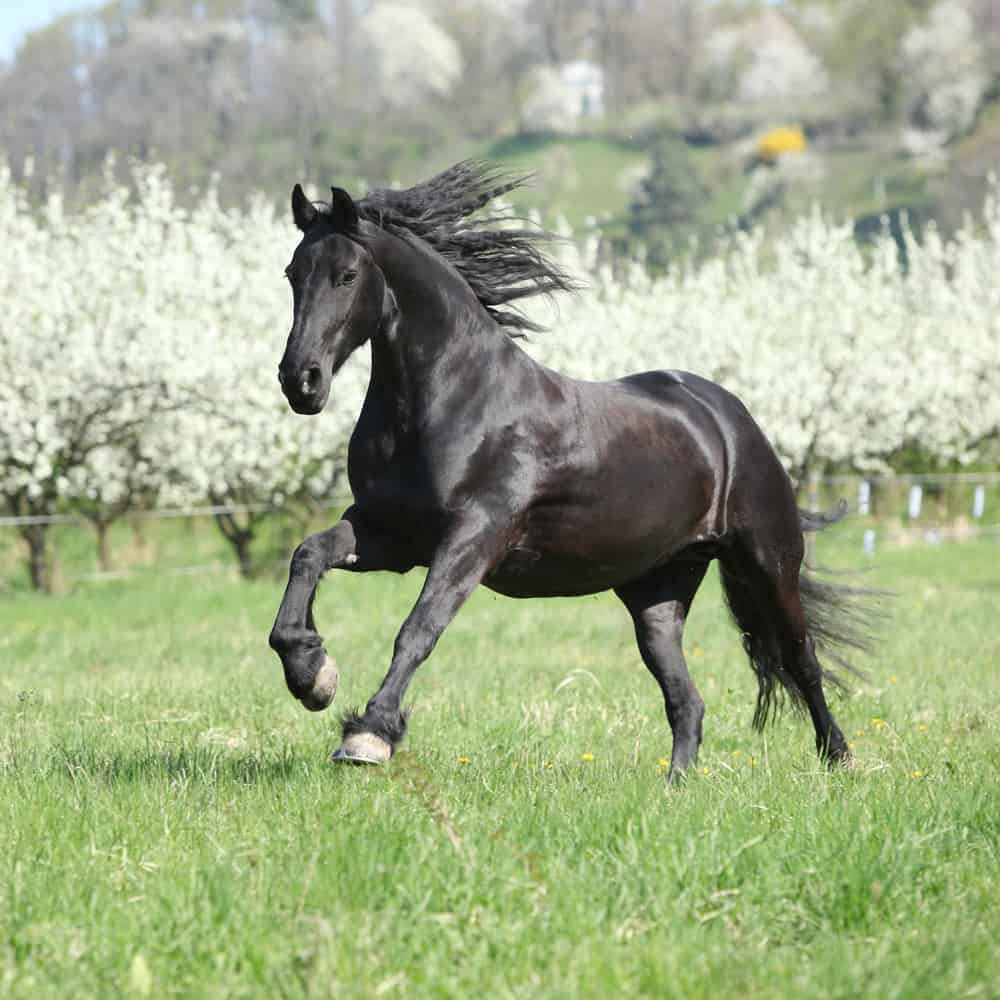
Smaller breeds, such as ponies, can reach their full size by three years old, while larger species, like draft horses, may take longer to get the full extent. Additionally, nutrition and exercise can affect how quickly a horse reaches its entire length.
Given the wide variety of breeds, it is best to consult a veterinarian or experienced horse expert for questions about a specific breed’s growth rate and expected size. Knowing a horse’s size expectations can help ensure that all appropriate care needs are met throughout life.
What are the stages of horse growth?
The first stage of life for a horse is the foal stage. During this period, which typically lasts between four and six months, the foal will experience rapid physical and mental development. During this time, they will grow to be about half the size of a fully-grown horse. The colt will also show signs of recognizing its mother, eating solid food, and standing independently.
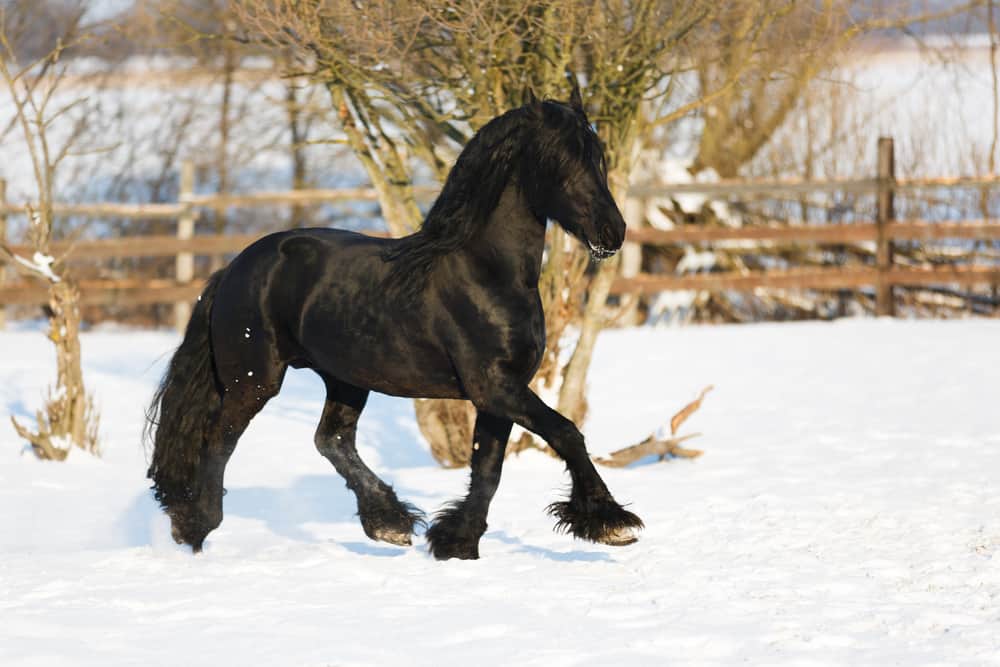
The second stage is called a weanling. This period typically lasts between three and four months, during which the weanling will start to eat hay and grain instead of its mother’s milk. The weanling will also stand and move around more on their own. At the end of this stage, they typically weigh about 600 pounds.
The third stage is called yearling. During this time, which usually lasts six months to a year, the horse will begin to look like an adult but is not yet fully grown. The yearling will grow longer and thicker hair and develop its muscle tone. They will reach their full height by the end of this stage but still have some growing to do.
Next comes the two-year-old stage, also called the “green horse.” During this time, which typically lasts between one and two years, the horse will continue to develop its muscle tone and become more confident in its movements. It will also teach more complex tasks, such as cantering and jumping.
The fifth stage is called the three-year-old stage. The horse will reach its full size and strength during this time, usually lasting from eighteen months to two years. It will also become more responsive to commands and better perform complex tasks such as dressage.
The sixth stage is known as adulthood, which usually lasts between four and five years. During this time, the horse will be well-trained and comfortable performing various tasks. This is the stage where they will be most responsive to commands and able to perform more complex movements.
Now that you know the different stages of horse growth, it’s time to start caring for your horse accordingly. Remember that each step comes with its own needs and challenges, so ensure you provide your equine companion with the best care possible.
Your horse will stay healthy and happy for many years with proper nutrition, exercise, and healthcare.


